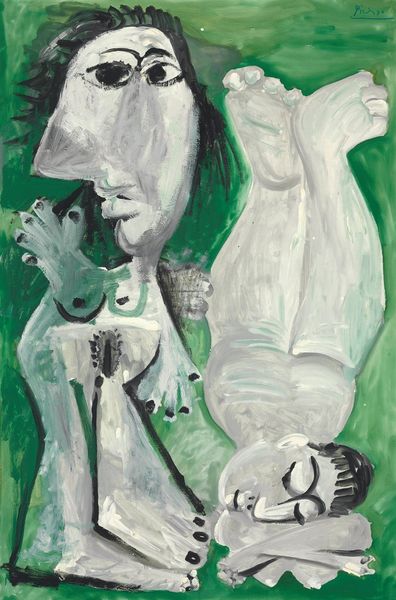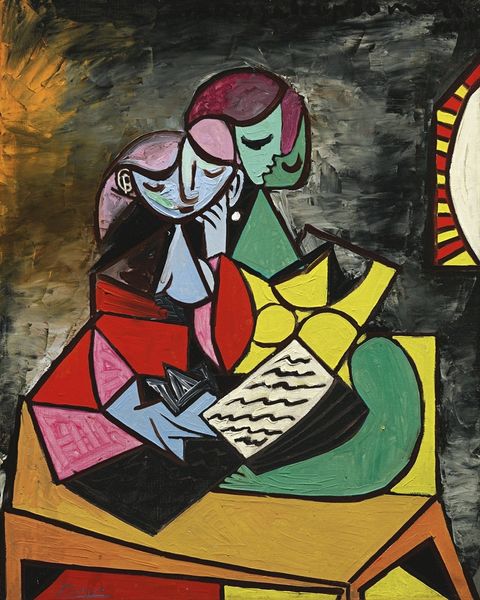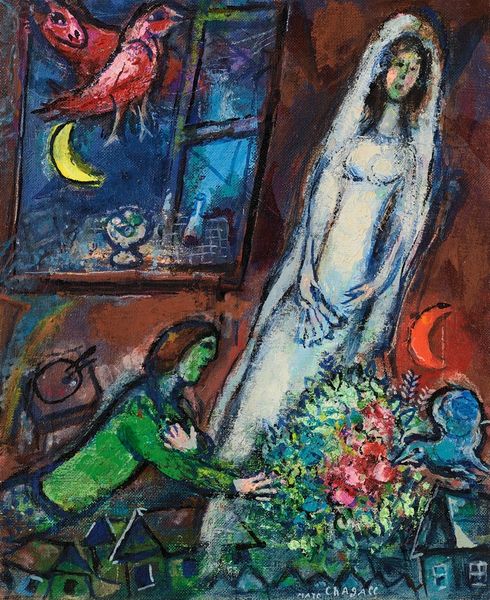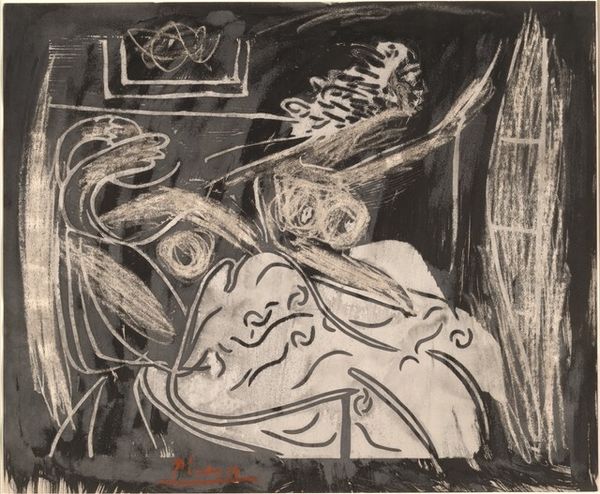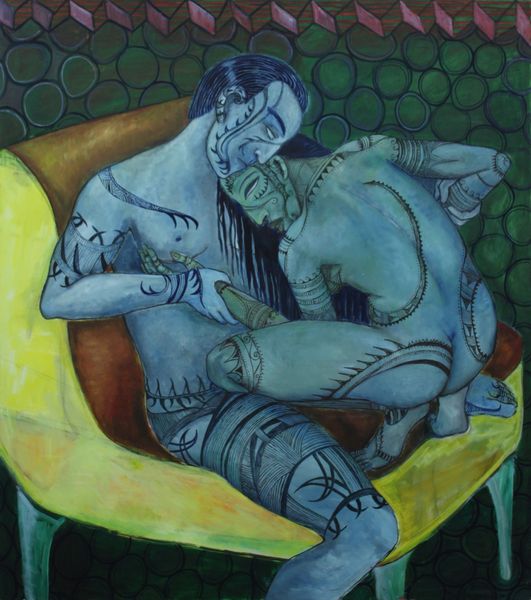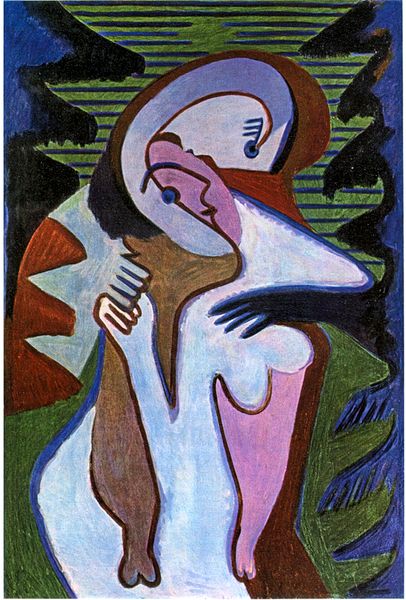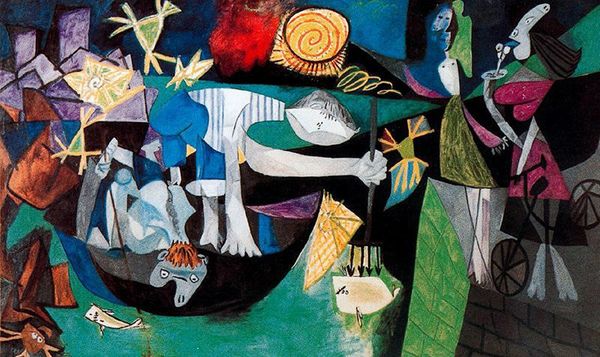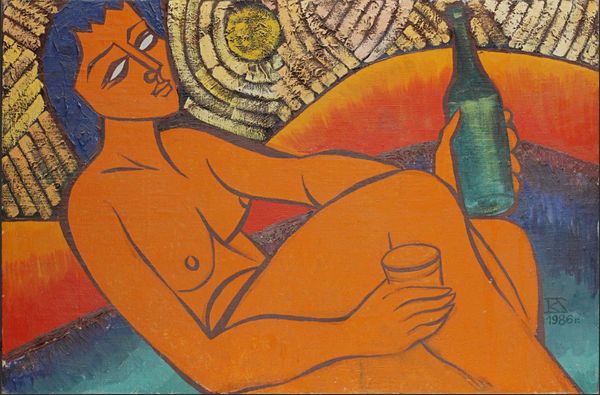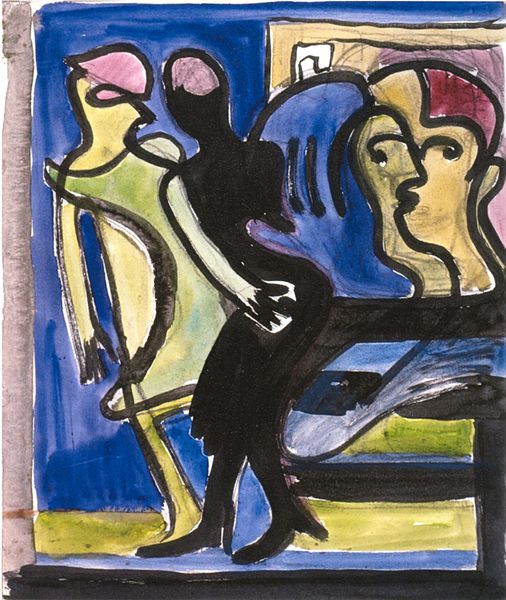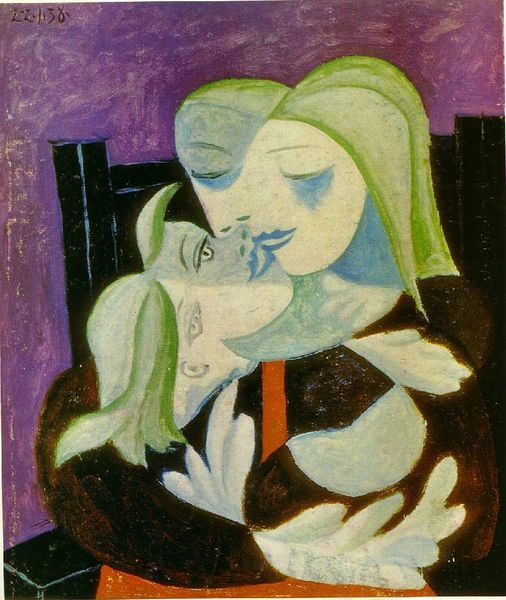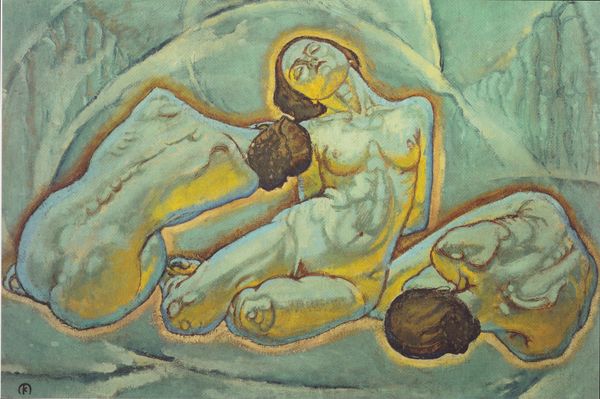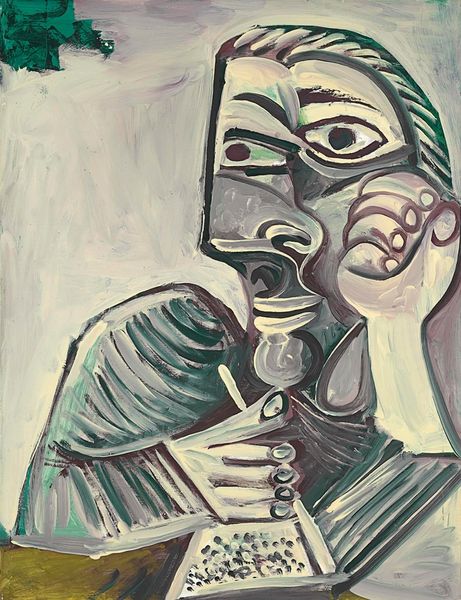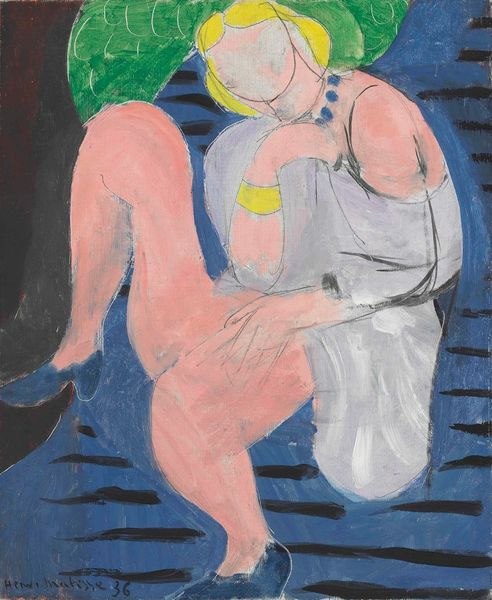
Copyright: Modern Artists: Artvee
Curator: Picasso’s "Nude, Green Leaves and Bust," painted in 1932, presents a rather intriguing composition. I’m immediately struck by the painting’s vibrancy and seeming simplicity, but there’s an underlying tension in how the figure is fragmented and reassembled. Editor: Yes, and the material handling—that thickly applied impasto of oil paint—draws attention to the physicality of its creation. What are your thoughts on the implications of the raw materiality used? Curator: Given Picasso's personal life, I immediately think of Marie-Thérèse Walter, Picasso's young mistress. The work exudes a sensual air, while the green leaves might symbolize renewal, spring, and the burgeoning love affair, even a subtle assertion of the female gaze claiming power. The tension and objectification within Picasso's portrayals of women are very palpable. Editor: Precisely! Consider how this piece challenges the traditional, patriarchal narratives that are so often constructed around these relationships. What were the conditions of the relationship? The access and affordability of these supplies? Who paid for what? This piece becomes far more complicated when viewed in light of these external realities and is clearly no more objective or inherently more “skilled” than that of any anonymous worker. Curator: Looking beyond that tension, however, the use of bold colors—those greens, pinks, and blues—alongside the simplification of form are classic Picasso. I mean, it's Cubism blended with a more fluid, sensual line. You've got that faceting of the forms, that fracturing of perspective. I think, despite those complications you outlined, that in these elements we might recognize its iconic style that revolutionized art history. Editor: It's worth reflecting on the societal framework supporting the 'Picasso genius' myth versus the collective work that often goes unacknowledged. It's crucial to acknowledge those structural inequalities when considering its significance. Curator: An intersectional perspective, always so essential. Viewing a celebrated work like this really forces us to examine these broader sociopolitical concerns inherent in art history and how power dynamics impact production and artistic legacies. Editor: Exactly, understanding both the art object and its means of production can show us its relationship to wider historical trends. Thank you for helping me frame this artwork within broader discourses on labor and materiality.
Comments
No comments
Be the first to comment and join the conversation on the ultimate creative platform.
